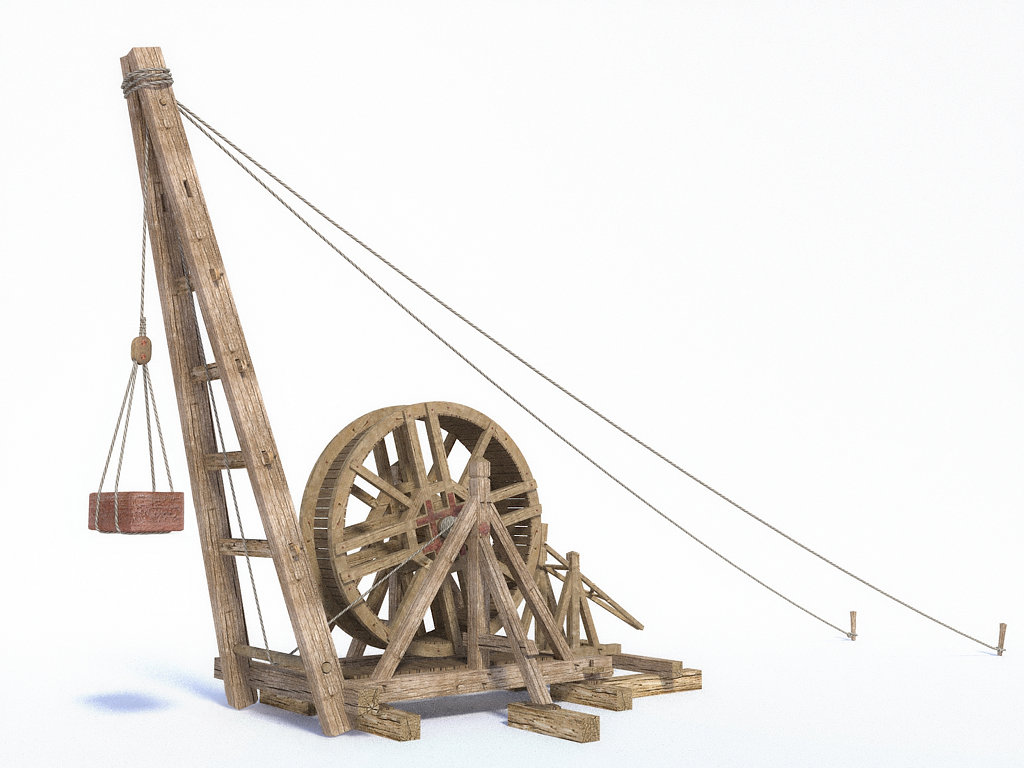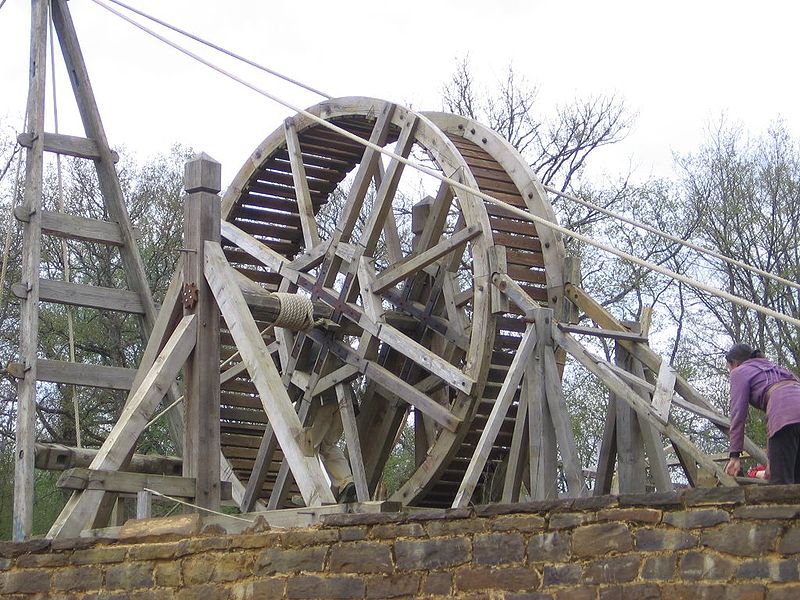Medieval construction crane
-
This is a crane as it was used on construction sites some hundred years ago. It mainly served for vertical lifting (the jib is not movable).
Similar cranes where moved level by level up as the building grew.Both rendered in Kerkythea with 70% Photonmapping high quality + 30% layer of Metropolitan Light Transport (combined in Gimp).
The setting of the second image does not yet make sense , I'll have to unbuild the romanesque monastery.
, I'll have to unbuild the romanesque monastery.


-
looks cool.
what kind of capacity did those things have?
-
great texturing!
-
Looks bloody good!

-
@unknownuser said:
looks cool.
what kind of capacity did those things have?
[url]http://fr.wikipedia.org/wiki/Grue_médiévale#Principe[/url]
Une cage, d’un diamètre de 2 à 3 mètres, montée sur un axe entraîne un tambour solidaire. Sur ce tambour vient s’enrouler la corde qui tire une charge à soulever. L’effort E à fournir est égal au moment de la force F par le rayon r du tambour, divisé par le rayon R de la cage (ceci sans tenir compte du frottement des différents organes en rotation), soit .
À l’intérieur de la cage, un ou plusieurs hommes marchent pour assurer la rotation. Un cliquet ou tout autre dispositif de sécurité empêche l’inversion accidentelle du mouvement dû à la charge. Un homme pouvait soulever un poids de 180 kg à 4 mètres sans fatigue et pouvait même aller jusqu’à soulever 500 kg de charge (homme de 70 kg, R=1,50 m, r= 0,15 m et un rendement de 0,7). Cette charge peut être plus importante avec l’adjonction d’une moufle.
Google translation:
A cage having a diameter of 2 to 3 meters, mounted on a fixed shaft drives a drum. On the drum is wound the rope pulling a load to be lifted. The effort to provide E is equal to the moment of the force F by the radius r of the drum, divided by the radius R of the cage (this regardless of the friction of the various rotating members) or.Inside the cage, one or more men walk to rotate. A ratchet or other safety device prevents accidental reversal of movement due to the load. A man could lift a weight of 180 kg to 4 meters without fatigue and could even raise up to 500 kg load (70 kg man, R = 1.50 m, r = 0.15 m and a yield of 0 , 7). This charge may be greater with the addition of a mitten.


-
Thanks Gilles for the explanation (and the Guédélon photo).
I will need some more cranes, especially one to raise the columns (that one is rather a lifting tower with the column in the center).
The Romans had more sophisticated cranes (Tri-/Penta-/Polyspastos) with 3, 5 or many pulleys (up to 3 tons per person).
Their lifting towers could move several hundred tons (but they only failed with 1200 tons at the Baalbek temple). -
Looks great. But, it's in a finished building, lifting a stone to...what?
-
As I have written, the only (provisory) scene I have is the finished building. Sometimes we have to reverse time and deconstruct it to do the final renderings.
-
This is cool. The guy walking inside would really have to trust the ratchet!
-
I love, LOVE, that people use SketchUp to do historical recreations.
Good job!
But I'm really impressed with the women in the render!

Seriously, great design and render.
-
Really nice modelling, texturing and rendering.


Advertisement







